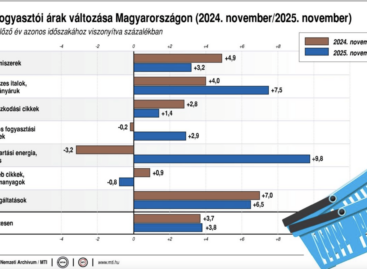Inflation in the euro area accelerated slightly in January
Inflation accelerated in January, instead of the expected stagnation, and the highest value in the euro area was recorded in six months by the statistical office of the European Union, Eurostat.
 According to a flash estimate by Eurostat, the statistical office of the European Union, annual inflation in the euro area is expected to be 2.5 percent in January 2025, the highest since July 2024, compared to 2.4 percent in December 2024. The market had expected an annual increase in consumer prices in January at the same rate as in December.
According to a flash estimate by Eurostat, the statistical office of the European Union, annual inflation in the euro area is expected to be 2.5 percent in January 2025, the highest since July 2024, compared to 2.4 percent in December 2024. The market had expected an annual increase in consumer prices in January at the same rate as in December.
The prices of services also rose the most in January, by 3.9 percent on an annual basis, although less than in December, when the price increase was 4.0 percent. The prices of food, alcohol and tobacco products rose by 2.3 percent in January, after 2.6 percent in December.
The higher-than-expected increase in inflation in January can be attributed to energy prices and non-energy products. Energy prices rose by 1.8 percent on an annual basis in January after 0.1 percent in December, and the prices of non-energy industrial goods rose by 0.5 percent after stagnating in December.
Related news
The Hungarian Confederation of Economic Workers also spoke out regarding the inflation data
🎧 Hallgasd a cikket: Lejátszás Szünet Folytatás Leállítás Nyelv: Auto…
Read more >KSH: in November, consumer prices exceeded the values of the same month of the previous year by an average of 3.8 percent
🎧 Hallgasd a cikket: Lejátszás Szünet Folytatás Leállítás Nyelv: Auto…
Read more >Extended margin squeeze begins – 13 more products will be subject to regulation
🎧 Hallgasd a cikket: Lejátszás Szünet Folytatás Leállítás Nyelv: Auto…
Read more >Related news
Christmas shock in commerce: for the first time, we can pay with bank cards in fewer places
🎧 Hallgasd a cikket: Lejátszás Szünet Folytatás Leállítás Nyelv: Auto…
Read more >Hungarian Confectionery Manufacturers Association: trends in 2025 and prospects for 2026
🎧 Hallgasd a cikket: Lejátszás Szünet Folytatás Leállítás Nyelv: Auto…
Read more >Most grocery chains will be open until noon on December 24th
🎧 Hallgasd a cikket: Lejátszás Szünet Folytatás Leállítás Nyelv: Auto…
Read more >






